
Hank Moss • Brian Malarkey • Forest Bathing
Mike Ensley • Lady Lookouts
• Michael Gesme















Hank Moss • Brian Malarkey • Forest Bathing
Mike Ensley • Lady Lookouts
• Michael Gesme













I’m going to let you in on a secret: Spirit of Central Oregon is my favorite among all the publications The Nugget Newspaper creates. I’m proud of the weekly newspaper we produce in Sisters, and of the Sisters Oregon Guide, which we send out across the region to extol the wonders of Sisters Country. I know you’re not supposed to have favorites among your “children,” but I can’t help it. The publication you’re reading is my favorite.
There are reasons for that: One is that its scope extends beyond our “home” territory. Central Oregon as a region is a remarkable place, with a remarkable history. It’s fun for our writers and photographers to get out and explore the territory.
Most of all, Central Oregon is home to remarkable people doing extraordinary things. Telling their stories is an honor and a privilege. From developing innovative protocols to manage the return of the wolf to our country, to launching into a new culinary endeavor, from an artist overcoming significant physical limitations to continue making his art, to people immersing
themselves in the natural environment to teach and to heal and to restore — we find stories of creativity and resilience that truly embody the spirit of Central Oregon.
There is no limit to the stories worthy of the telling. That’s why we have launched this spring edition of Spirit of Central Oregon. There are just too many stories to tell to confine them to one magazine each fall.
It’s my favorite — and two is just… better.
You, the reader, have a role to play. Chances are very good that you have a story worthy of the telling — or know someone who does. We hope you share them with us. If you know someone whose life and endeavors speak to you of the spirit of Central Oregon, please share them with us. We want to tell your stories.
Jim Cornelius, Editor in Chief editor@nuggetnews.com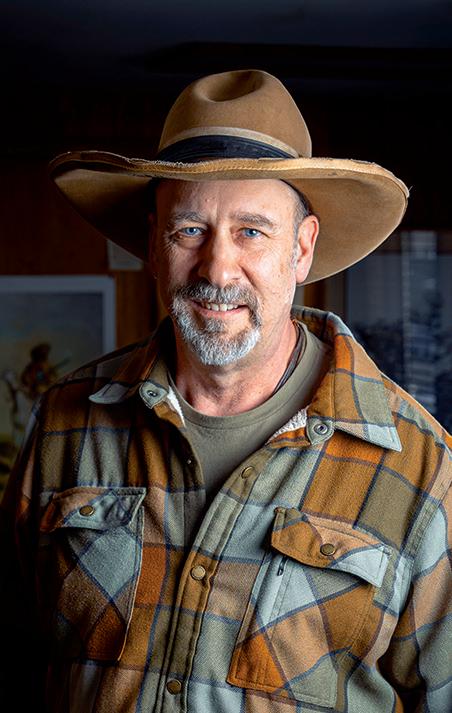


We take our senses for granted. It’s hard for most of us to contemplate being deaf or blind. We just don’t want to imagine it. We’re amazed when we see somebody who has lost their sight do amazing things. Making music, for example — like Stevie Wonder, Ray Charles, Ronnie Milsap.
Or we admire James Thurber, the blind cartoonist for The New Yorker; Claude Monet, French painter; James Joyce, Irish writer.
How about a blind photographer? How’s that possible?
Well, it is. Meet Gary Albertson. He lives in Camp Sherman, and his works hang in a local Sisters gallery.
Photo of Gary Albertson by Jay Mather.





















Gary Albertson didn’t start life blind. He was born and raised in the Willamette Valley. From his earliest memories, the natural beauty of the Northwest landscapes captured his heart on every family outing.
In 1995, while traveling in Rarotonga, his kidneys failed. Back in Portland a willing sister was the perfect organ donor. Grateful for life, he became more determined in perfecting his gift for fine art landscape photography.
Oh, what a wonderful sacrifice to slow down. Just give me a hundred yards and two weeks. I do not need to go far to find beauty and to capture it, to share it with the world.
— Gary Albertson
In 2010, another health crisis struck. Albertson’s 30-plus year career as an award-winning corporate graphic designer and acclaimed, internationally collected, fine art landscape photographer seemed at its end — the result of a rare inherited disorder called pigment dispersion glaucoma.
But Albertson refused to succumb to the devastating effects of the disorder. Today, with just a fraction of peripheral eyesight remaining, his deep love of nature drives him to adapt against all odds as he continues to refine his photographic art.
“One of the gifts of blindness, especially to a photographer, is the requirement of moving much slower. It takes me much more time now to finely compose an image, to finely see it, and to stitch all of the pieces together in my head; to finally see its sense and shape and form,” Albertson said.
He is completely blind in his left eye, and has a small amount of peripheral vision in the right.
“Yet he masterfully continues to capture the raw beauty of Northwest landscapes,” said Helen
 Photo by Gary Albertson.
Photo by Gary Albertson.






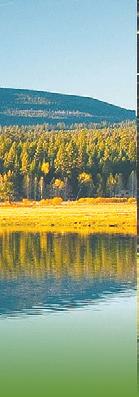
































Schmidling, co-owner of Sisters Gallery & Frame Shop where his work is represented. “But his first true love is the Metolius Valley. He has earned a reputation as the Ansel Adams of the Metolius.”
More remarkable yet is that he teaches fine art photography. One of his students is Willard Bartlett III, of St. Louis, who maintains a seasonal residence in Camp Sherman. Bartlett has himself a journey of struggle.
“At the St. Louis Zoo, I was the last head keeper in the Lion House before becoming director of
development for the Zoo, raising the funds for the Big Cat Country facility. I spent a few years doing writing and consulting, before I crashed and burned from alcoholism,” he recalled.
He found Albertson quite by accident. Or fate.
“Twenty years ago a friend moved from St. Louis to Portland, and when visiting, I discovered Camp Sherman,” he said. “The minute I drove over that bridge, I had one of those Joseph Smith moments, and I said: ‘This is the place.’ I knew this was home, and I’ve been spending summers there for 18 years.”


 Gary Albertson. Photos by Bill Bartlett.
Gary Albertson. Photos by Bill Bartlett.
Bartlett, with Albertson’s tutelage, has himself become an accomplished and recognized landscape artist.
“I’ve been a photographer on-andoff my entire life, but this is my last road. It’s my creative outlet. It’s how I grasp the deep significance and beauty of God’s creation,” he said.
He and Albertson have a barter arrangement. Bartlett does the driving and positioning, and Albertson does the schooling.
“It’s a real Mutt and Jeff relationship,” Albertson said with a laugh.
For a man who has gone through so much, he has an enormous sense of humor and self-awareness to match a quick wit.
Notwithstanding his good nature, Albertson can cut to the bone. He describes Bartlett as a perfectionist and always looking for the perfect setting or scene.
He recalled, “I stopped him cold one day as we were tramping from one place to the next and I said: ‘Willard, do you want to take pretty pictures, or do you want to be an artist?’”
That was a breakthrough moment for Bartlett.
For years, Albertson shot exclusively with a 4x5 film camera.
“It was my best friend, my constant companion,” he said.
His diminished eyesight forced him toward the digital world. While he still shoots occasionally with the 4x5, he now uses a Nikon D750 for about 80 percent of his work.
He can no longer do post-production editing, and relies heavily on the expertise of close friends to help him, especially Dennis Schmidling, Helen’s husband, himself an accomplished photographer and artist.
Albertson describes where he is in life this way: “Oh, what a wonderful sacrifice to slow down. Just give me a hundred yards and two weeks. I do not need to go far to find beauty and to capture it, to share it with the world.”

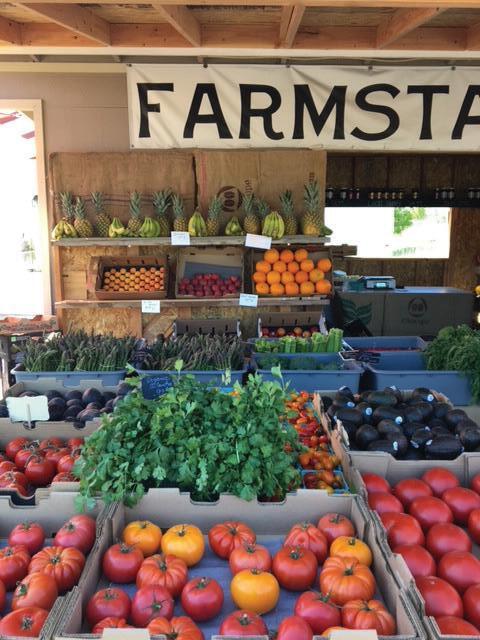


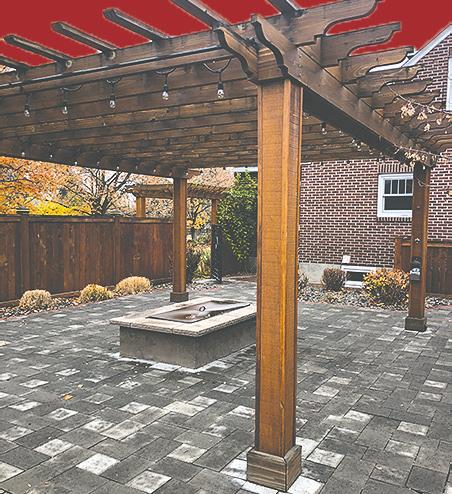
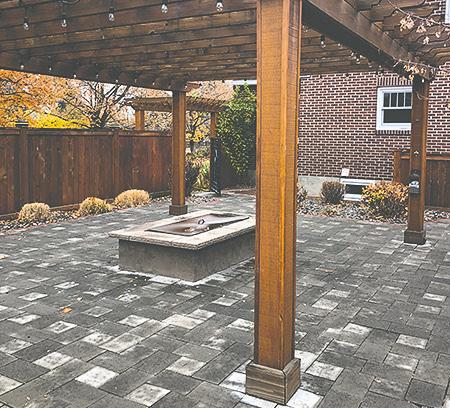

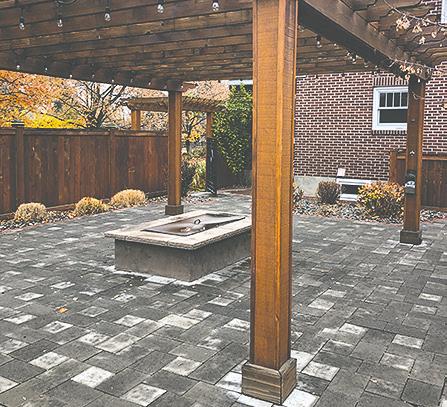

Saddlemaker creates functional, traditional artBy Jim Cornelius

There’s a haze of romance around that life — and Hank will tell you it was a fine life for a youngster.
“That was a pretty magical growing up. I was horseback all the time,” he recalled. “It was super cool.”
That doesn’t mean it was easy. Moss’ family moved from San Antonio, Texas, to a spread under the rim of Bryce Canyon without much in the way of worldly goods.
“We were in really rough shape,” he said.
The family moved into an abandoned log cabin in 1977, and Hank remembers learning how to chink the gaps between logs to keep the winter from coming right through the walls.
“I cooked on a wood stove till I was a senior in high school,” he said.
That old-school American pioneer upbringing shaped the man Moss became — and an inspiring high school shop teacher named Anton Pollack set his boots on the path he walks today. Pollack taught young Hank braiding and leather work, and, most practically, to repair his shoes. Moss lived a long way from a shoe store.
Moss married his wife, Renee, and took a ranch job in Eastern Oregon. The ranch was remote, and Moss loved the country.
“You know how many stars you can see out there?” he said. “All of ’em.”
Life on a remote ranch suited him well, but it wasn’t a good long-term prospect.
“We wanted to start a family, and my wife said, ‘no, not 80 miles from town,’” Hank recalled.
The Mosses moved to Central Oregon, and Hank found a business opportunity that was suitable for a man with a young family — and one that matched an old skill set. He took ownership of a Madras shoe repair shop and renamed it The Cobbler Shop. He eventually moved it to the former location of a saddle shop in Prineville, where he operated for 13 years.
Moss knew how to repair boots and shoes — but he had another trade in mind for the shop. He taught himself to make saddles, working off of books and videos by the highly regarded craftsman Jeremiah Watt.
“I built a saddle and entered it up there at the Pendleton Leather Show,” he recalled.
Moss found out that Pedro Pedrini was coming to Pendleton to oversee the legendary Hamley Western Store and Saddle Shop and run the Hamley Saddle Academy. Pedrini grew up around horses in the Swiss Alps, where he developed a passion for Western riding — and the leather gear it required. Starting in the leather trade in 1972, Pedrini developed a reputation over the ensuing decades as one of the elite saddlemakers in the world. A member of the Traditional Cowboy Arts Association, part of his work has been dedicated to preserving and passing on the traditional functional art form he has mastered.
Moss recognized an exceptional opportunity to learn from a master. He signed on for a month of schooling in the saddle maker’s craft. His academy saddle served as his résumé and job interview for a position as a saddlemaker at Hamley’s. An offer was on the table, and he decided to stay. From 2016 to 2019, he worked under the tutelage of Pedrini, and has himself become a first-class saddlemaker.

They have converted a trailer into a saddle shop where you can picture legends of the Old West hanging out while the Mosses are at work.
Now, in 2024, Moss and his son Wyatt operate Square Dot Saddlery on the Moss’ Prineville ranch.
While a saddle can be a beautiful work of art — with intricate carving and stunning silver trimmings — for Moss it’s “all about mechanics.” To truly be a fine saddle,


a well-balanced seat is more important than anything else. The saddle has to work. All day long, day after day.
“Anybody can carve a saddle and make it pretty,” Moss said. “That’s pretty easy. Something you can really ride — that’s another thing entirely.”
There are no shortcuts. The old-fashioned way of doing things is still the best way of doing things — and that means working deliberately, punching a single hole at a time, and running the stitching. It’s not work for the impatient. It requires a temperament that enjoys detail and seeks perfection.
“You’ve gotta kind of love it,” Moss said. “Those time-honored techniques are pretty phenomenal.”
Moss’ son Wyatt also likes detail work. He joined his dad at Hamley Saddle Shop to do “strap goods” — headstalls and the like.
“There’s just something about a clean piece of leather, cut down with really clean lines,” he said.
Wyatt is carrying on another tradition: music.
“That started a long time ago,” he said.
He inherited the passion and the chops from his great-grandparents, who have a spot in the Western Swing Hall of Fame.
Wyatt is a talented fiddle player and singer. He performs across Central Oregon with Dry Canyon Stampede, and has toured with Texas Country Red Dirt singer/songwriter Olivia Harms.
In addition to his work in the traditional cowboy art form, Hank is doing his part to keep the Western lifestyle vibrant in Central Oregon. He’s entering his third season as a member of the Sisters Rodeo Association Board of Directors.
He may be a long way from the kid who spent his days horseback in southern Utah, but in a way the distance in time and miles isn’t much at all. With every stitch, Hank Moss is still touching the magic in the spirit of the West.
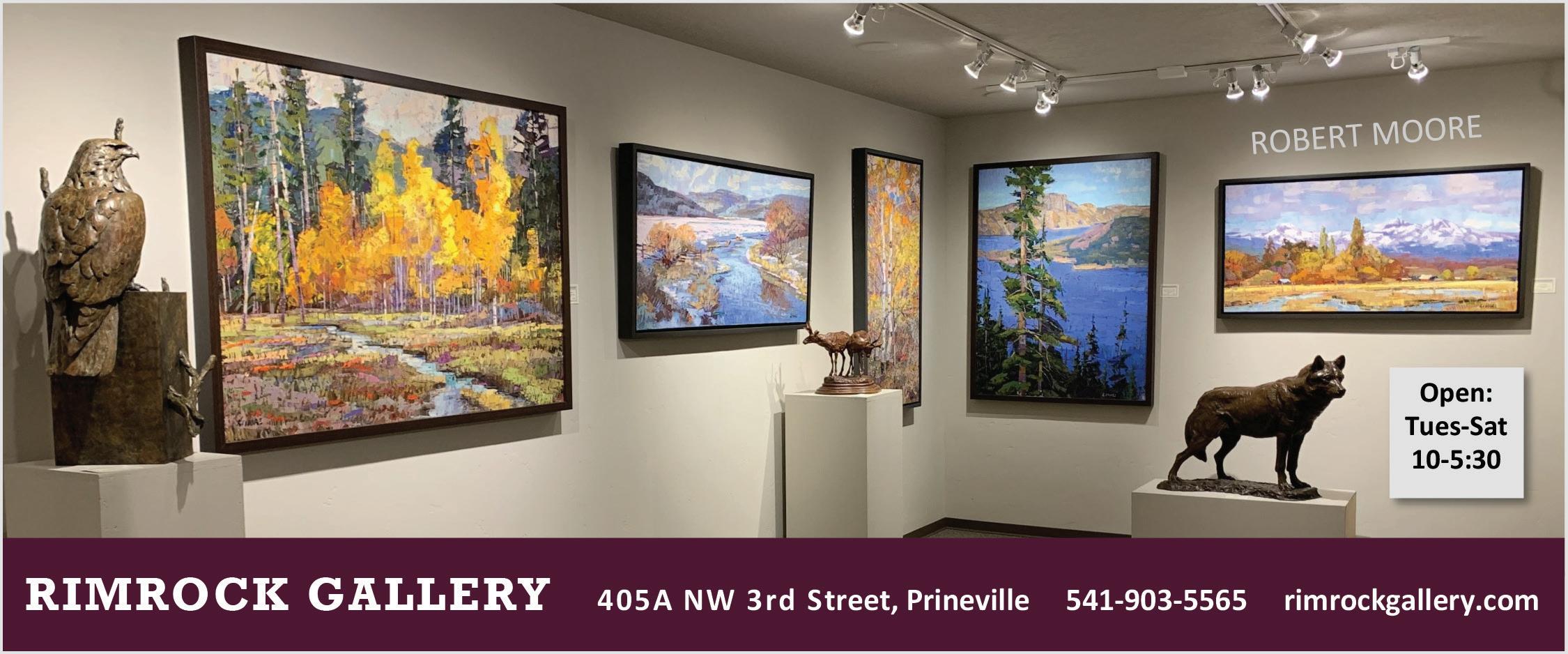









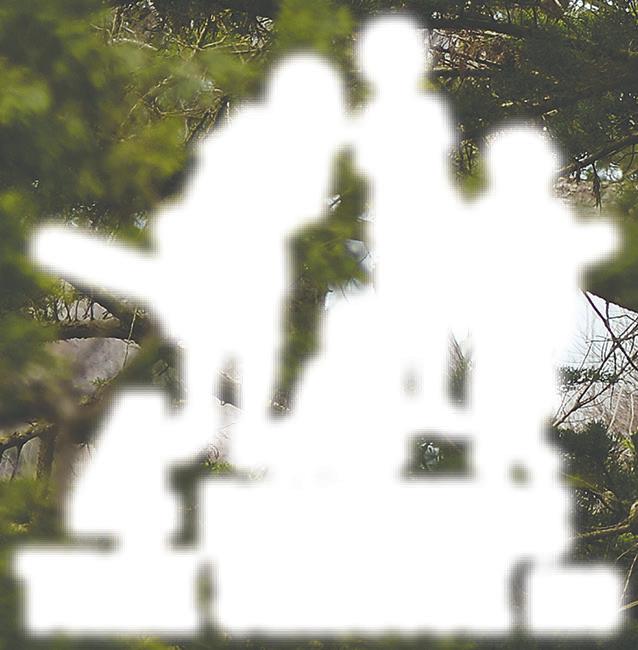







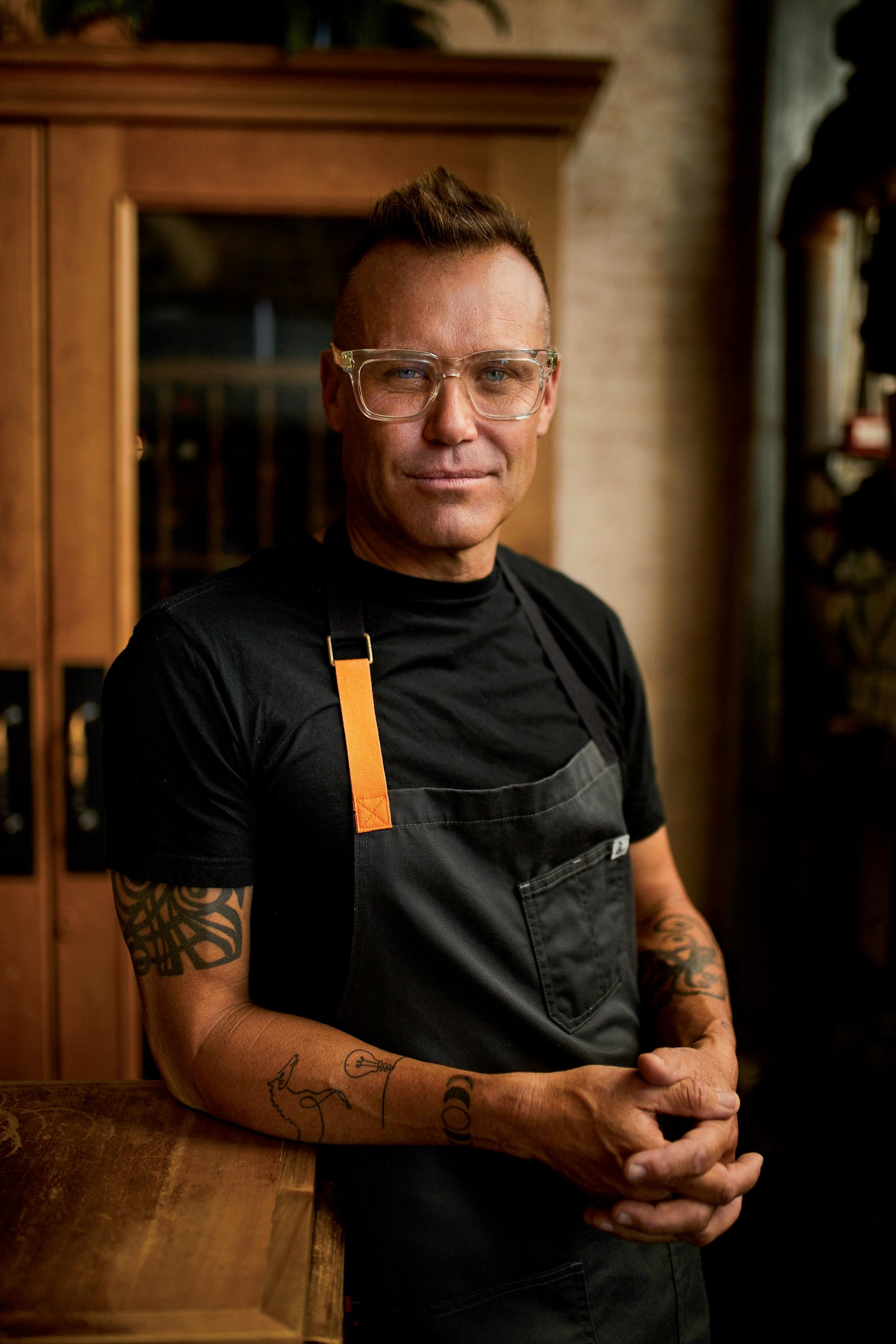

Celebrity chef and restaurateur Brian Malarkey, who grew up on a ranch in Tumalo, and went on to create over 15 successful restaurant concepts in various cities, is returning to Central Oregon this spring, with his brother James, to open his latest vision, Hawkeye & Huckleberry Lounge in Bend.

Malarkey's roots run deep in Oregon, with his father’s ancestors arriving on the Oregon Trail in the 1850s. Brian grew up on the Tumalo ranch where his mom, Lesley Day, founded the locally famous Chimps Inc., a sanctuary for rescued chimpanzees, which is currently Freedom for Great Apes.
Now a culinary master, Brian is a graduate of Redmond High School, where he was a high school rodeo champ with cutting horses for three years. In the summer, he visited his grandmother’s beach house, where Brian was able to spend time with one of her longtime friends, famous chef James Beard.
After graduating from Western Culinary Institute’s Le Cordon Bleu College of Culinary Arts in Portland, he worked in Los Angeles at Citrus with Chef Michael Richard. From there, he moved to Oceanaire Seafood Room in Minneapolis. He returned to the West Coast in 2001 to open Oceanaire’s new Seattle location before moving to San Diego to open another Oceanaire as executive chef and operating partner.
He also opened numerous other restaurants in the San Diego area and beyond, each with its own distinct vibe and cuisine. Over the years he has sold his majority interests in several restaurant groups.
For the past two decades, his world has been that of restaurants and television, where he earned his reputation as an outstanding television chef on Food Network and Bravo, appearing on Top Chef All-Stars, Cutthroat Kitchen, and Chopped. At the same time, he was creating nationally acclaimed restaurants.
When COVID hit in spring 2020, Brian began doing virtual cooking classes with people across the country for charity. According to his website, he ended up doing 100+ classes and was shocked by people’s lack of understanding of the oil aisle. And thus, Chefs Life, a cooking oil for the home chef, was born.
Despite his fame and travels, Brian has always reserved a place in his heart for Central Oregon, where he delights in the surrounding nature, people, and lifestyle. Many summer days are spent at the family’s spring-fed Rainbow Lake near Idanha. In the winter, he and his three children ski the slopes of Mount Bachelor. His teenage children are son Huntington, age 15, and 13-year-old twins, Miles and Sailor. According to Brian, Miles would like to move to Central Oregon and become a cowboy like his dad.












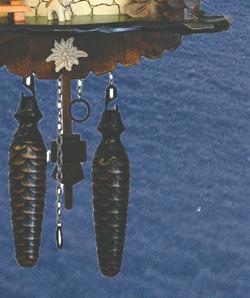










Brian now shares the ranch in Tumalo with his mom, where he turned a 1950s barn into a house, leaving two stalls inside the house for guests who want to sleep with their equine friends. He has also added additional guest space with an Airstream trailer.
“Our executive chef and partner at the restaurant (Hawkeye & Huckleberry Lounge), Anthony Torres, intends to grow our herbs and lettuce on the ranch. Plans call for some beef to be finished on the ranch and
all ingredients on the menu will be sourced in Oregon,” Brian explained.
“It’s been my lifetime dream to come home and cook great food for my friends and give the community another amazing place to share stories, shoot the breeze, and celebrate life,” he said. “It has been so amazing to watch Central Oregon evolve and become a real culinary destination and I’m so excited to be a part of this thriving community.”


James Malarkey shares a similar
love for the great outdoors and the boundless spaces of Oregon as his brother. Growing up on a working ranch in Scappoose, he is an alum of Central Oregon Community College and Oregon State University. An accomplished entrepreneur and marketer, James has patiently bided his time, awaiting an opportunity to work with Brian and pay tribute to his affection for Oregon and the Pacific Northwest.
When the brothers began looking for the perfect location for Hawkeye



You are going places. Your personal chauffeur will make it easy.




“Hey Siri, order me a chauffeur in Sisters Oregon.” HNW

and Huckleberry Lounge, they just couldn’t find what they were looking for among the older buildings in downtown Bend. Then Brian found the former Walt Reilly’s building on Century Drive, with what Brian described as “great bones.” The building resonated with the Malarkey brothers, offering the perfect opportunity to do something special in a place dear to their hearts.
“I saw a great building, a big package, with both indoor and outdoor spaces, but it had no soul. Everything on the inside is being totally revamped to change the entire look and feel of the building,” Brian said. “I want the space to be what makes me feel at home and comfortable. I want to impress the customer, not other designers or reviewers.”
Bringing together a team of friends and longtime colleagues, Hawkeye & Huckleberry Lounge has called on Heylen Thienes, founder of Bend-based
design firm Tricorn Black, to transform the space into a wonderland for the modern outdoors person. According to Brian’s publicist, the space will be homey, fun, unique, and offer a menu packed with Pacific Northwest cuisine.
“The lively U-shaped bar and lounge will be the ideal setting for a quick bite and drink after a day on the mountain or a cast in the river. Cocktails will have Western motif names like the Barrel Racer. Leaning into the ‘glamping’ aesthetic, large canvas tents will be available for private special occasion bookings, as well as sprawling tables for group and family dining.
“Additional elements in the space will include a birchwood stage for live music, a seasonal outdoor patio with a ‘Kids Camp’ area, a live fire for roasting s‘mores, and plenty of room to roam. By the fire in the winter months and under the stars on summer nights, the space ultimately strives to be a
gathering place for the community of Central Oregon, including families, groups, couples, and anyone who loves Oregon as much as the Malarkeys.
There will be seating for 200 patrons in the dining room and 80 in the private spaces. A total of 40-50 employees will serve the patrons. The restaurant will be open seven nights a week, 4-9 p.m. Sunday-Thursday, and 4-11 p.m. Friday and Saturday. The restaurant is located at 225 SW Century Dr. in Bend and is scheduled to open in May 2024.
Hawkeye & Huckleberry Lounge is set to encapsulate everything Brian loves about the art of cooking, the joy of entertaining, and the cherished memories of his ranch upbringing in Tumalo.
Brian shared there will even be a life-sized cow and horse in the restaurant. He welcomes all comers, from those with faded jeans and dusty boots, to puffy jackets and Subarus.

Hawkeye & Huckleberry Lounge, currently under construction, is scheduled to open in May on SW Century Drive in Bend. The patio in the front of the building contains a fire pit for roasting marshmallows and a roll-up door. Photo by Sue Stafford.












Ask the average passerby to define “forest bathing,” and if the first reaction isn’t a blank stare, the offered definition is apt to miss the mark by a fair distance.
Missie Wikler, owner of r’oming yoga in Bend, is a certified forest therapy guide and RYT Yoga Instructor. She explains forest bathing as, “A practice where participants bathe themselves in the forest atmosphere. There is no water involved in this practice and the bathing refers to immersing oneself in the phytoncides, a group of chemicals which plants use to communicate with each other. Scientists are finding that our bodies respond to these chemical signals in ways which are beneficial for us. Practicing forest bathing has been shown to increase immune response, and decrease stress hormones in the body.”
Mindy Lockhart, a certified nature and forest therapy guide and owner of Rooted Presence in Bend, describes it this way: “Forest Therapy is a research-based approach for supporting health and wellness through immersion in forests and other environments to promote the well-being of people and natural landscapes.
“Inspired by the Japanese practice of
Shinrin-yoku, which translates to ‘forest bathing,’ it is a practice of spending time in forested areas for the purpose of enhancing health, wellness, and happiness.”
Many an observer would say it’s yoga in the woods and that would be a fair — but not complete — description. The experience will vary considerably depending on one’s experience, or inexperience, in meditative practices.
While one can bathe alone, forest bathing is usually a small-group affair.
Lockhart expands: “A Forest Bathing session starts off with a guided meditation deepening into each of the senses, and then you’ll be led through a series of invitations that offer the opportunity for deeper relaxation and connection with ourselves and the living world.
“Invitations are open-ended. There is no expectation for what participants should experience or receive. Rather, participants spend time in silence, listening and feeling with a quiet and accepting presence. They become reconnected with their senses and interact with nature in ways that they never thought possible before.”
Wikler, like most practitioners, is passionate about forest bathing.





“I have always been innately drawn to our natural world,” she said. “I worked as a field biologist for many years and turned to education, feeling that I could have more opportunities to impact our world in a positive way. It was in education that I developed a passion for connecting others to the land, our earth, our home. Blending yoga, breath work, and forest-bathing practices I could firsthand see the healing powers of nature.”
Lockhart conducts public and private sessions in various convenient settings by advance mutual scheduling. She can make accommodations for those with mobility issues.
“Many of us instinctively know that time in nature is good for us. A growing body of research has established that spending time in nature can deliver a range of health benefits,” she says.
Research in the 1980s conducted by the Japanese government to investigate the health benefits of spending time in forests examined the physiological and psychological effects of being immersed in a forest environment.

Various indicators were measured, such as blood pressure, heart rate, cortisol levels, and immune system responses, before and after participants engaged in forest activities.
The studies’ findings concluded that spending time in forests could produce a positive impact on human health and well-being. Wooded environments were said to reduce stress, lower blood pressure, boost the immune system, and improve mood. The findings led to the recognition and promotion of forest bathing as a therapeutic practice in Japan that spread quickly to the Western world.
Forest bathing is not meant to be strenuous. Most are gentle hikes or leisurely walks conducted mostly in silence. Lockhart was engaged by Deschutes Land Trust last summer to lead a forest bathing walk on its Metolius Preserve.
Meg Daly in Bend tells Spirit of Central Oregon : “Being mindful in nature, slowing down, interacting with one’s surroundings in an exploratory way leads to insights and inner calm. One powerful moment for me was sitting quietly observing a downed log from which
new life was sprouting — baby trees, lichen, small plants. I could actually witness and feel how the cycles of life operate and I was awash in a sense of peace, that we return to the earth, we are all part of a whole, and we never really disappear.”
In larger cities, like Portland, forest bathing is offered at municipal sites like botanical gardens or arboretums. The popularity of forest bathing is growing, with dozens of providers throughout Oregon. Many are concentrated on the coast. Dozens of Audubon Society chapters across the U.S. feature forest-bathing events.






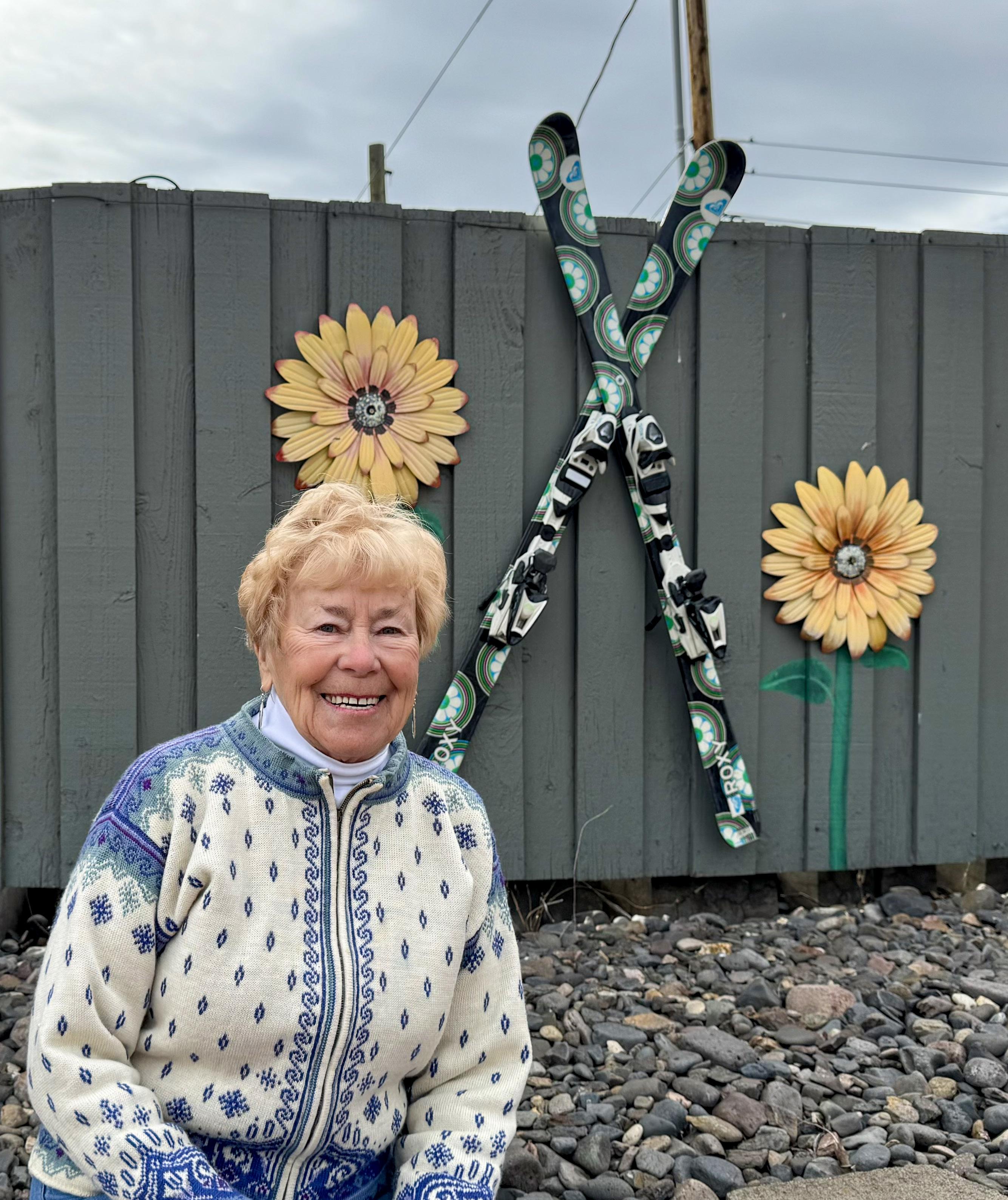
Donna Sanders is a neighborly sort with a big smile and bigger heart. She has taught thousands of new skiers of all ages how to get into a sport that typically lasts a lifetime. This includes kids who have gone on to competition.
Even two knee replacements can’t keep her from suiting up. She has piled up a slew of recognitions including the coveted Skiing Legends Award from Professional Ski Instructors of America. This award led Ski Hoodoo to create its slogan:
“Hoodoo – Where Legends Are Found.”
Last year she was honored by Travel Oregon, the state tourism agency, with the Gene Landsmann Gemütlichkeit Award honoring an individual of the Oregon Ski Community (Industry/Sport) who embodies the spirit and effect of Gemütlichkeit.
Donna Sanders has taught thousands of people the joys of skiing. Photo by Bill Bartlett.


It’s a German-language word used to convey the idea of a state or feeling of warmth, friendliness, and good cheer. Other qualities encompassed by the term include coziness, quality of life, and a sense of belonging and well-being.
In making the award, Travel Oregon said: “For the past 43 years, Donna Sanders has inspired skiers young and old at the Ski School at Hoodoo with an emphasis on safety, skill, and fun. Her warm personality, friendliness, and love of people combined with her passion for skiing have been an incredible gift to the ski community at Hoodoo.
“Donna served for 10 years on the board for the Professional Ski Instructors of America and her focus during the later years of her career was to encourage female skiers to try the sport and/or to come back to it later in life. Known to some at Hoodoo as the ‘matriarch of skiing,’ Donna is an incredible asset to Oregon’s skiing community and tourism industry.”

professional tax preparer.
“I needed an excuse to continue going to Hoodoo every weekend, so that is when I decided to try out for the Ski School position at the urging of some of our friends that we had met there along the way.
Sanders almost retired last year, but thought better of it. She’s still at it, much to the delight of Hoodoo management, her fellow instructors, and, of course, her students.
It all began by spending her winters on Hoodoo beginning in the 1960-61 season where she and her husband agreed to take lessons every Saturday morning for eight weeks.
During that time, “I learned to make the very best ‘snowplow’ example that you could imagine,” she said.
They continued every season with family passes until their daughter left for college, and her husband went back to school in pursuit of a career as a
“For many years I taught four days a week, and always 10 days through Christmas holiday and spring vacations. During those years I chaperoned a bus from the Valley on a mid-week day encouraging adult skiing and lessons.” That went on for 18 seasons.
There are dozens of stories about how Sanders helped change somebody’s life or made a lasting impression on them. One involves a man badly hurt in a construction project in South America. Returning to Salem, he connected with Sanders who gave him lessons. She inspired him to continue his skiing, enjoying the outdoors, and becoming a volunteer. He gave his time to Oregon Adaptive Sports (OAS).

OAS is a premiere adaptive sports foundation in the Pacific Northwest providing a range of year-round programs. OAS creates access to over 2,000 high-quality outdoor experiences each year to more than 400 unique individuals.
When we asked Sanders how many students she has taught, she said: “Some seasons it was as many as 1,000,” indicating that some 40,000 skiers took at least one lesson from her. One, Caroline Patton, from Sisters, told us: “I’m sure she won’t remember but she was my first day instructor in the early ’90s when I learned as an adult. All the others that day were under eight.
“She then gave my tween girls lessons around 2001 and in 2019 she got my grandsons on their skis. She was so amazingly patient and encouraging.”
Sanders says she will take it one season at a time but nobody should be surprised, her fellow instructors say, if she gets to the 50-year mark.



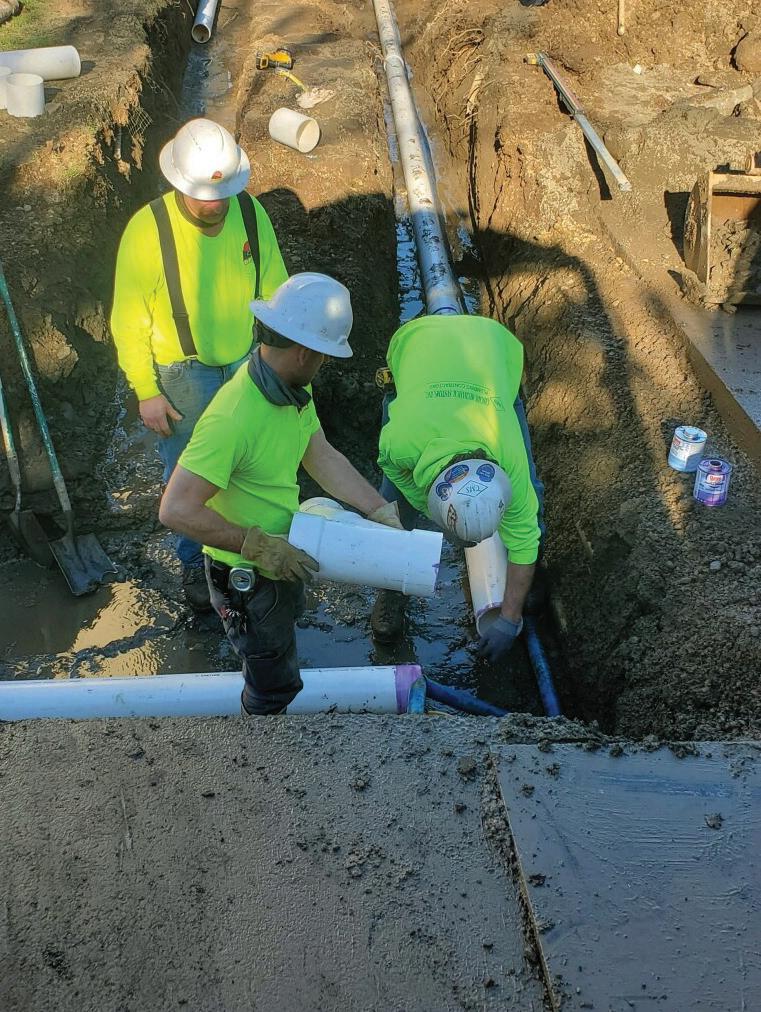

• Sewer, water, electrical, and drainage lines






• Clearing & removal of trees, stumps, brush
“We continue to get praise from our neighbors on our new driveway. The BANR crew is professional, kind, and thoughtful, leaving a clean worksite behind each day. We have already recommended BANR to others!”
— Jeff & Theresa R., Bend
• Foundation excavation and backfill; site grading
• Curbs, driveways, patios, and RV pads








• Gravel and asphalt driveways; concrete sidewalks
• Rock and border retaining walls Gravel and

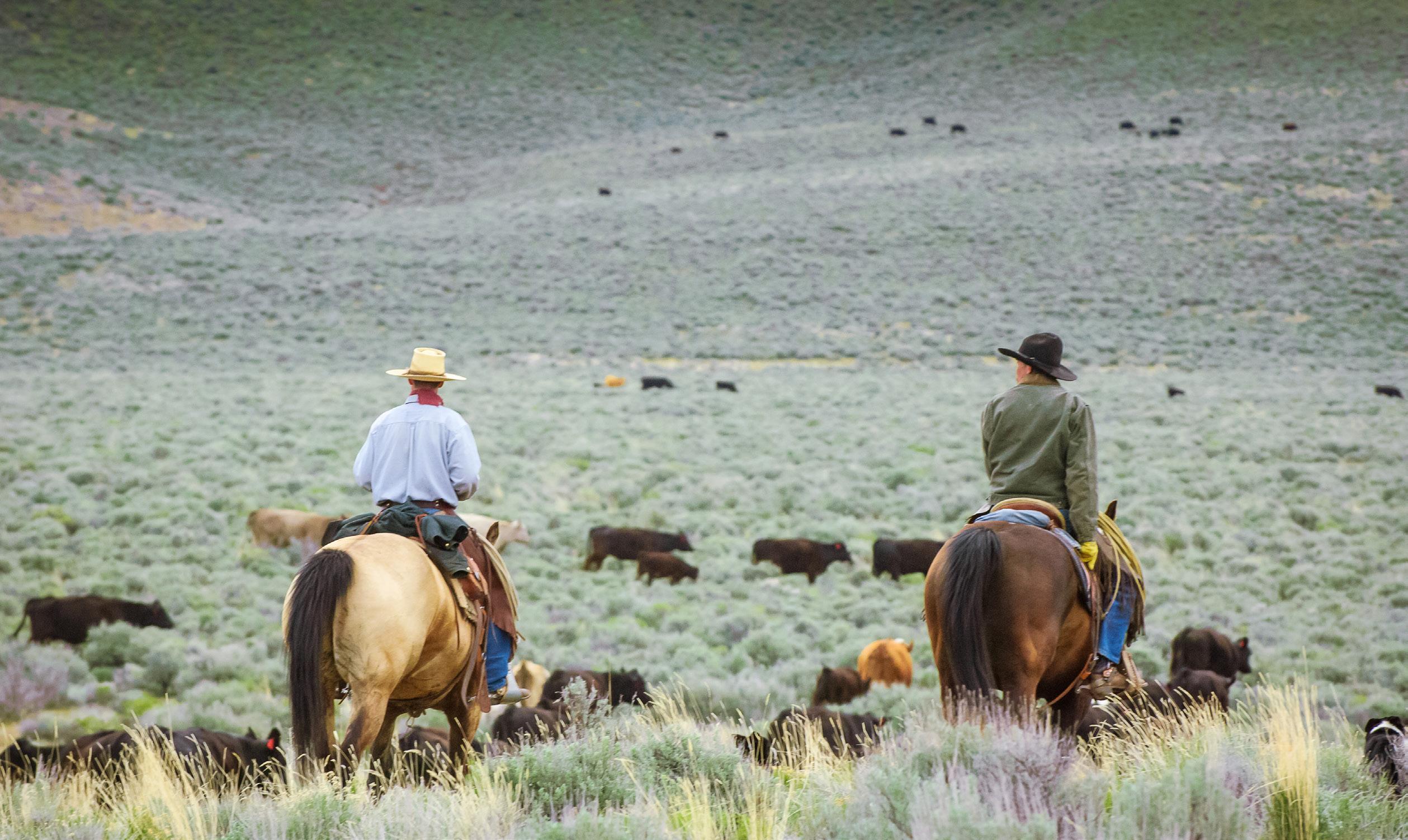
The word came in from a local rancher: Wolves had killed his livestock. The Oregon Department of Fish and Wildlife (ODFW) investigated the claim and confirmed it. Reactions to the incidents ranged from outright anger and fear to tempered excitement that wolves were finally back in Central Oregon, where they once lived until being eradicated 50 years ago.
According to ODFW Wildlife Biologist Aaron Bott and Range Specialist Mike Ensley, the initial responses that included taking up arms against the wolves is often not necessary. There are non-lethal methods to deter wolf predation. All it takes is some education and putting what you learn into practice.
Wolves have been villainized by some as killing machines that hurt ranchers’ efforts to raise and sell their cattle for breeding, rodeo stock, and eventually slaughter. For centuries wolves have been portrayed as something to fear and avoid at all costs. It seems wolves could use a good public relations campaign to shift the perspective held by many folks from a prolific killer to an apex predator whose presence helps balance the natural order of wildlife and landscapes they inhabit.
To move away from outright extermination of problem wolves, there are organizations working to educate the public and ranchers who share the landscape with this native species. Working Circle is a nonprofit educating ranchers on the benefits of training their cattle with low-stress stockmanship techniques and health-related management.
Working Circle’s Range Specialist Mike Ensley works with ranchers throughout Colorado, California, Oregon, and Washington, mitigating wolf-related concerns. He often rides alongside the ranchers helping them assess their herd’s behavior and overall health.
Through years of experience with thousands of cattle under his care, Ensley knows that treating the herd and individual animals with proven stockmanship techniques improves a rancher’s bottom line with fewer animals taken by wolves.
“As I work with a herd of cows, I condition and train them to take pressure comfortably,” said Ensley from his ranch in Christmas Valley. “Over time, they’re calmer with pressure from me or anything else that encounters them. When wolves show up, the cows don’t react in a frantic sort of way. They respond in a calmer manner. A wolf’s trigger to kill is based on a more frantic reaction from the herd, whether it’s cattle, elk, or deer. Splitting and running in different directions, or just running as a herd, eventually allows the wolves to split one off. We’ve witnessed a herd of cattle reacting in the way we’ve trained them. The wolves went into the herd, moved among them, tried to get a reaction out of them, and when they couldn’t, they left and made a kill a couple of miles away. It’s very effective.”
How a herd reacts to a predator shapes outcomes — but so does individual health. Wolves know when an animal isn’t well, and will hunt animals that are weaker and easier to take down.


“The second biggest factor in avoiding wolf predation in my operation was understanding that wolves can smell an unhealthy animal from several miles away,” Ensley said. “Keeping excellent health in those cows can make all the difference. We believe that through certain management practices, that include mineral programs and keeping their blood balanced, the wolves won’t smell health deficiencies and be drawn to the herd. A healthy herd of cows isn't what the wolves will focus on. They move onto more unhealthy herds for a kill. It’s something I’ve witnessed and it’s a fact. I’ve been running ranches across the west all my life and I learned a lot of these management practices before having encountered wolves. Whether or not wolves are a factor, better stockmanship and overall herd health results in a better bottom line at the end of the year. When I began managing a large herd in the middle of a depredating pack, I watched the wolves come through my cows. I learned what was going on by spending a ton of time studying them. I found that the wolves were in our cows sometimes daily and nightly, but they passed through my herd and went on to regularly make livestock kills in other herds. I started putting this together once I asked if those other herds were getting a good mineral program and if they were being handled in an aggressive way by the handlers.”
Bott agrees with Ensley’s assessment and experience managing cattle in wolf country. Wolves have been a part of the landscape in the West since they were reintroduced in Yellowstone and Idaho in 1995 and ’96. As wolf numbers grew, they began to disperse to create their own territory and family groups.
“Wolves have been in Oregon for the last couple of
decades,” Bott said. “The first pack was confirmed in 2009. Wolf density is highest near Oregon’s northeast border. Their dispersal into Central Oregon has been a slow steady process,” said Bott from his office in Prineville. “We’ve had wolves in Central Oregon for several years. The Metolius pair has been here for about three years. There’s another pack on the Confederated Tribes of Warm Springs land for around four years. To the north of Warm Springs there’s a pack in White River, on the north end of the reservation. Wolves have been confirmed in Mt. Hood National Forest, and there’s a wolf pack south of La Pine along the Upper Deschutes region. We’ve had wolves in the eastern front of the Cascades for the last six years.”
Since January, Ensley has been working full-time with Working Circle as a resource and advocate for ranchers. The organization offers workshops that introduce a variety of tools available for livestock owners who may encounter wolves. Ensley is eager to do some workshops in Oregon. Working Circle is looking for funding so they can send Ensley into Central Oregon to share what they’ve learned about coexisting with wolves. Bott encourages livestock owners to connect with Ensley and Working Circle because they’ve proven to be an effective resource for ranchers.
“There are a lot of tools that can be used to empower producers. Wolves have been on the landscape coexisting with livestock owners around the world for thousands of years. Recovery in Oregon began about 70 years ago. People have to learn how to coexist with them again,” said Bott. “There are places where people have been raising livestock with wolves for a long time and have learned ways to coexist. There are tools that can help producers operate



successfully. A lot has to do with understanding what the actual risk is and what the biology of the wolf is and understanding how they use the landscape. That requires getting real facts about wolves and wolf depredation. Yesterday, I was putting up non-lethal tools, like Fladry, a temporary fence used to protect newborn animals from predators. Groups like Working Circles who work with wolves in neighboring states and are willing to come and help producers get over this learning curve are the answer. They’re out there trying to help.”
Ensley understands ranchers’ concerns but also knows there’s a way to reduce the number of livestock being taken by wolves. Having run his own cattle and managed thousands of head for decades, he’s part of the ranching community and is dedicated to helping.
“We can stand on the shoulders of other people who have been raising livestock successfully with wolves. I do a lot of talking and outreach. It can fall on deaf ears some of the time. Working Circle operates independently of agencies. We meet with producers who are saying, ‘the sky is falling.’ That really isn’t so, we’ve been working with wolves for the last 30 years and our business is doing great,” said Ensley. “Sometimes we have to deal with generations of beliefs and traditional ways of managing cattle. It can be hard introducing a new belief. Learning that our techniques result in better profit margins can be a factor in letting in some new ideas.”
To learn more about Working Circle visit their website at www.workingcircle.org. Contact Mike Ensley at 541-5893613; he’s always happy to talk with ranchers and answer their questions over the phone. He hopes to bring a Working Circle workshop to Oregon this year, once they get some funding through donations or grants. Aaron Bott can be contated via email at charles.a.bott@odfw.oregon.gov.
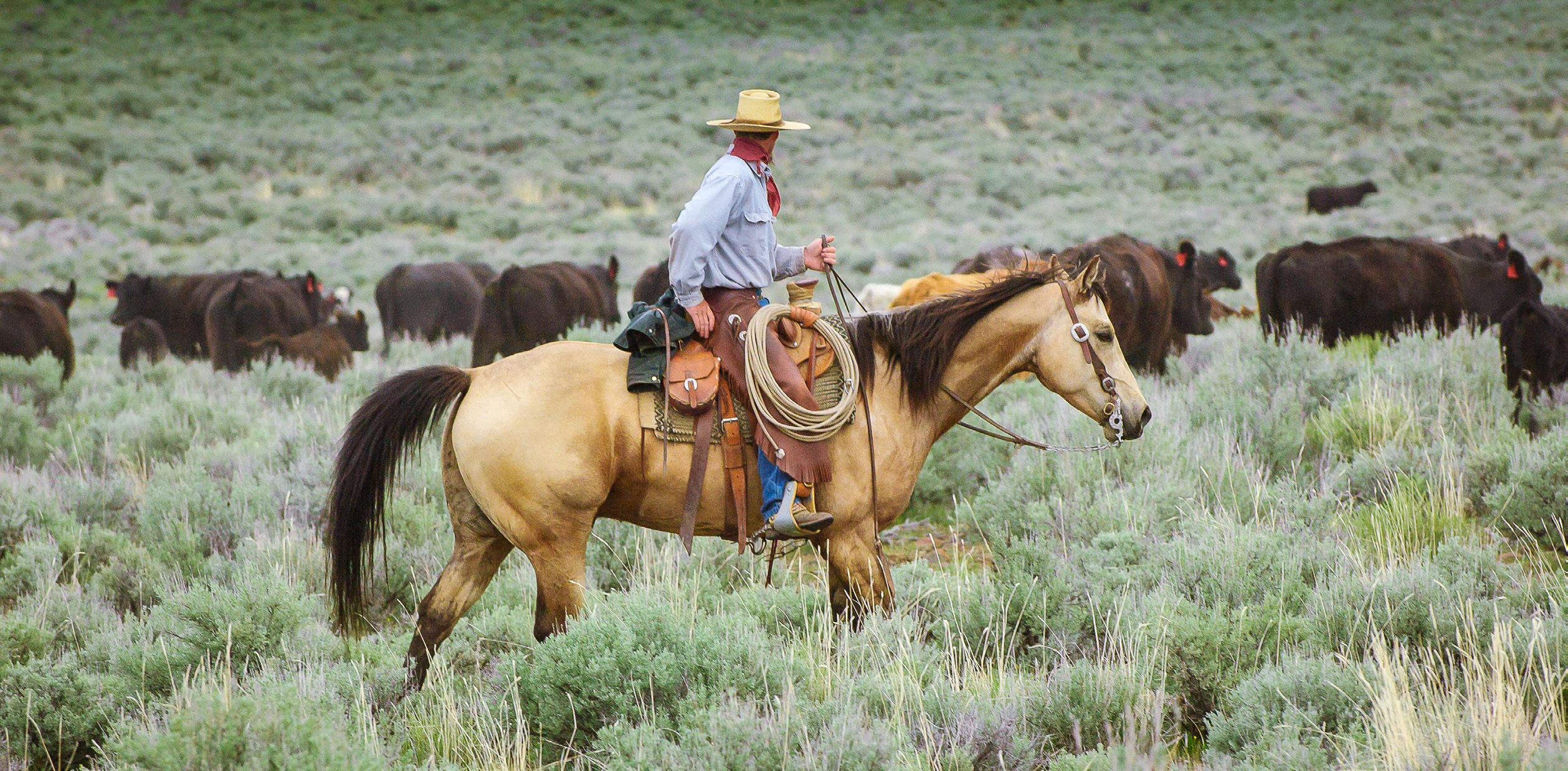 Mike Ensley
by Devin Dahlgren Photography.
Mike Ensley
by Devin Dahlgren Photography.


















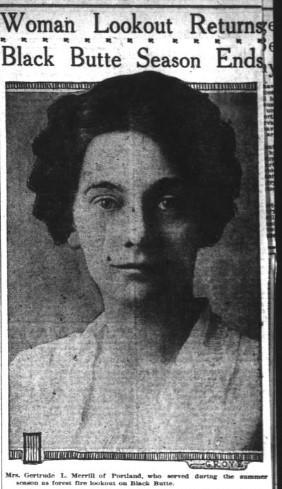

In 1913 a ranger in California reported his top choice for a fire lookout post was “no gentleman.” He hoped his supervisor’s heart could stand the shock of the novel idea of hiring a woman. Hallie Daggett knew the country, was good with a horse and rifle, and unafraid of anything that walked, crept, or flew. She got the job and served admirably for 15 years as the first woman lookout in the country.
For decades working in the forest was seen as a man’s world. After the Forest Service was created in 1905, many men worked in remote stations, often with wives who worked alongside their husbands for free. But one paying job where the glass ceiling was cracked very early was the world of fire lookouts. World Wars depleted the number of young men for hire. Hallie got a lot of press and soon hundreds of young women applied for jobs watching over the forest.
A Sunday Oregonian article from 1920 explained “...no matter how much we might debate woman’s place, few of us would consider a location on the crest of a high mountain as just the fitting position to install a helpless bit of delicate womanhood. However, the United States Forest Service has demonstrated the contrary.”
Women climbed into trees to perch on tiny, high platforms, and lived in remote cabins on mountain tops, hauling wood and water, suffering fall snowstorms and high winds, and repairing their watch towers. Many served alone but
others brought children, dogs, kittens, and the occasional husband.
The first woman lookout on the Deschutes National Forest was Cora Leland on Paulina Peak in 1918. But the Sisters Ranger District was not far behind when they hired Gertrude Merrill, a stenographer from the Portland Regional office, to work on Black Butte in 1921. Her husband was severely asthmatic and advised to live in the mountains. Gertrude was transferred to Black Butte, where she lived with her husband and son in a primitive cabin with an 18-foot-high covered platform. Her intimate knowledge of the agency was said to make her invaluable.
Hazel McKinney was on Black Butte in the new Cupola lookout in 1923. The Bend Bulletin reported on her in romantic passages describing her stories as “Tales of forest fires visible in the distance far below as small points of light; vivid description of myriads of stars blazing overhead; stories of lonely hours spent in her glass encased house 6,425 feet above sea level...”. She lived with her two daughters, Clarice and Katherine, and their black collie Snip, who was the first to welcome visitors riding up on horses from Hansen’s Resort in Camp Sherman. She knew the country intimately and worked in tandem with her firefighter husband, Fred, to zero in on fires with a system of mirror flashes. She demonstrated the advantage of the live-in glass Cupola by reporting a fire from bed at 1:35 am.

Sometimes couples worked together. An Oregon Journal editor, Fred McNeil, and his wife, Bea, ardent Mazamas, were on Black Butte in 1928 and 1929. Bea pioneered the first all-women climb of Mt. Hood in 1932 and was incredibly strong. “That was Yesterday” reports she hiked up and down 4.5 miles from the summit to retrieve pack horses and supplies several times in one day. Bea would carry laundry down to Allingham Ranger Station, have a swim at Hansen's Resort, and hike back up with clean clothes later that day.
During World War II, women filled many needed positions. But it is a mystery how a French teacher known only as Madame Dore became Cache Mountain lookout in 1945. On a leave of absence from the University of Idaho, she was living in Madras testing her new way of teaching French to students with no exposure to the language. The results were reported to be amazing.
In an article in The Bend Bulletin, “Madame Dore stated that she believed that a greater knowledge of foreign languages in the America of the future, with a resulting deepened understanding of the thinking of other peoples, would be a tremendous asset towards an ordered and peaceful world!”
No word on how she liked the lookout, her first name, or what happened after.
In 1976, Kathy Murray spent a quiet season on Black Butte, quartered in the rodent-infested old cupola. On her

off days she rented a room at The Palace in Sisters. She had few fires or visitors, except the mice that would jump on her head in bed at night. Victoria Johnson had a quiet summer on Green Ridge and Black Butte in 1980, except for a fire at Tollgate. She remembers her adrenaline calling in the

coordinates and struggling to climb the tower in high winds.
Black Butte ignited during a lightning burst in 1981 that started 67 fires. Lynn, the courageous lookout, stayed at her post, calling in fires until the trail was engulfed and she was ordered to evacuate. She escaped down the north side and the tower came within inches of burning. "I was not a great lookout in 1984, but my best call was a smoke moving along Highway 20. A survivalists’ van was burning, but drove on with bullets exploding as they got hot, scaring the fire crew."
After a very long season in 1985, Patricia, an ardent sailor from the east coast, left a final note: “I’m cold. I’m tired. I want out of here.”
Glen Corbett spent about 30 years on the lookouts of Central Oregon including Henkle, Green Ridge, Black Butte, Lava Butte, and Wolf Mountain. Many times, she declared it was her last season, but somehow just couldn’t stay off those mountain tops. It’s a strange job for the chosen few who love it and many women over the last hundred years have served and felt that mountain magic.




Central Oregon has a deep and rich music tradition centered mostly around folk, blues, and country genres. Big name headliners from a range of musical tastes fill local amphitheaters, festivals, and stages throughout the year, primarily in the warmer months.
Often overlooked in Central Oregon — but certainly appreciated — is classical music, as exemplified by Michael Gesme, professor of music at Central Oregon Community College (COCC).
Now in his 28th year in his expansive position, he conducts the Central Oregon Symphony, the Cascade Winds Symphonic Band, and has taught various and sundry music courses, including music theory, ear training, music history, and conducting, as part of a small, but flourishing music department. In addition to his duties at COCC, Gesme serves as conductor of the Central Oregon Chamber Orchestra and is also an active clinician and adjudicator in the region.
Gesme has served as music director of the Linfield Chamber Orchestra and the Missouri Chamber Orchestra and has appeared as a guest conductor with several ensembles, including the Sunriver Music Festival Orchestra, Salem Chamber Orchestra, and Wenatchee Valley Symphony. He also served as the orchestra conductor for the Young Musicians and Artists summer camp in Salem. He received his bachelor’s degree from Luther
By Bill BartlettCollege (Decorah, IA) and his master’s degree in orchestral conducting from the University of Missouri-Columbia.
Gesme, apart from his musical accomplishments, is full of joy and energy. He brings fun to an otherwise serious genre. At the Winter Concert, for example, at the end of the opening selection — a vigorous and zestful piece — Gesme stomped his foot on the podium in appreciation for the orchestra’s effort.
That same concert featured not one, not two, but three soloists. The last was 10-year-old Avery Armstrong, a prodigy from San Francisco with a dozen international Grand Prizes, who aced Mozart’s Piano Concerto and brought the packed house of 1,400 roaring to its feet. Gesme raised the diminutive Armstrong off her feet in gleeful delight of her performance.
His exuberance is infectious and the audience and players eat it up. He bounces around on the podium contorting himself in gestures urging and nudging players to give their all.
When asked what he’d like Spirit of Central Oregon readers to know about him, he immediately deflected any attention on himself.
“This isn’t about me. It’s about the music and the musicians,” he said.
“It’s a much different place than 28 years ago,” he said. “Not just in growth, but in the quality of the players





and the audience. Still, I’m always surprised when people ask if there is symphonic music here.”
Gesme said that players find the orchestra, meaning he doesn’t have to go out recruiting.
“There are so many accomplished musicians here, many of whom have come from long distances. Music is their passion and they give enormously of themselves with long rehearsals and demanding works,” Gesme says in gratitude.
It’s a community orchestra which means players, other than guest artists, are not compensated. Other than the piano and some percussion instruments, the players own their instruments.
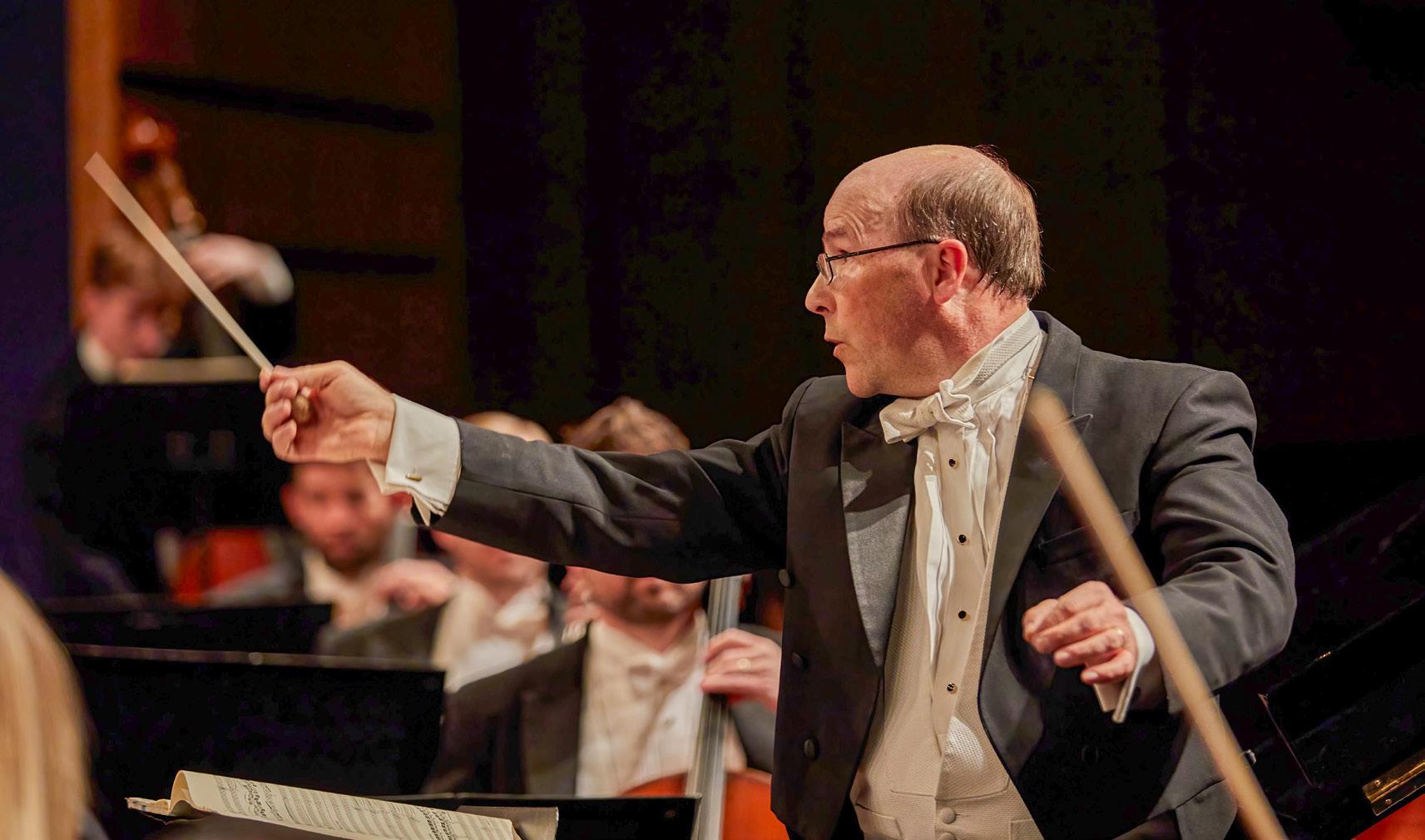
“Most own more than one, some several, and they’re all expensive, fine quality adding to the sound quality,” Gesme said.
“This orchestra is absolute fun,” said Isaac Zimmerman, who once played for a major European orchestra. “I mean they are excellent musicians who can execute difficult pieces with precision and brilliance, but they are a pure joy to watch, be in the presence of.”
Walt and Celinda Craydon from Sunriver are regulars, guests of their children.
“They are so entertaining, just so enjoyable,” said Walt. Celinda added, “We love coming to the concerts and listening to not only competent music but being part of such an appreciative audience. It’s impossible not to have a good time here, even if you never heard classical music before.”
Central Oregon Symphony is a community-based orchestra, the success of which is rooted in the
talent for the love of orchestral music. The ensemble was formed in 1967 as a part of the expanding COCC Fine Arts Department.
The symphony is technically owned by COCC and plays in partnership with the Central Oregon Symphony Association. Their season runs from October into May with a variety of offerings featuring a range of composers from across the classical spectrum.
Some 60 regular players are occasionally supplemented and as many as 150 instrumentalist and choristers have jammed the stage over the years.
Two season tickets are mailed with a $60 donation. Complimentary tickets are available, as the Symphony Association is committed to accessibility and affordability. Most recipients of free tickets, grateful for the quality of the performances, become donating members to assure themselves of future seating for usually sold-out performances.
For more information visit www.cosymphony.com.



























There are at least a dozen labyrinths in Central Oregon from Prineville to Bend to Sisters to Black Butte Ranch. They range from a portable canvas version to a 140-foot-diameter medieval 11th-circuit installation, and everything in between.
A few are in private gardens, but most are publicly accessible. Even some of those in private ownership are available by appointment and a requisite meditative practice, not just curiosity seekers. In all of Oregon there are 145 listed on the World-Wide Labyrinth Locator, a joint resource of Veriditas and The Labyrinth Society.
Veriditas is dedicated to inspiring personal and planetary change and renewal through the labyrinth experience. They accomplish their mission by training and supporting labyrinth facilitators around the world, and offering meaningful events that promote further understanding of the labyrinth as a tool for personal and community transformation.
The Labyrinth Society is oriented toward bringing labyrinth enthusiasts together in order to share their interest, energy, and expertise. Its mission is to support those who create, maintain, and use labyrinths, and to serve the global community by providing education, networking, and opportunities for experiencing transformation.
The Labyrinth Society maintains an extensive website with information about labyrinths, regional and national events, and forums for connecting with other enthusiasts. The Labyrinth Society also stages an annual Conference and Gathering, sponsors a global
By Bill Bartlet | Photos courtesy Labyrinth CompanyWorld Labyrinth Day, and other international events.
Churches are the most common setting for labyrinths. In Bend, one sits at Trinity Episcopal, First Presbyterian, and Nativity Lutheran churches. In Sisters, a 51-foot-diameter, medieval sixth-circuit brick and paver labyrinth is in the gardens of Church of the Transfiguration.
Labyrinths vary widely in construction from rock and gravel to paved installations. The paths (lanes) can be formed by any number of three-dimensional materials — shells, pebbles, rocks, sticks — or painted or etched onto the surface.
The most famous of labyrinths, and the majority of installations, are paved to accommodate thousands of users over long periods of time. They typically require less maintenance as compared to rock and pebble, the latter being more easily disturbed by the elements and wandering animals. The former are easily swept and snow is easy to remove.
Lorilee Winston in Sunriver tries to walk a labyrinth every week and has found herself on no fewer than a hundred she reckons.

“I’ve been on some of the best-known ones in Europe and several here in Bend. In one sense, they’re all the same,” she said. “I am so into the moment, the present space and time, that I see nothing around me, only soft images. Even the path is a bit translucent,” she elaborates.
Ron Porter in Bend just got started in the practice following the advice of his cardiologist, who advised Porter to slow down and get his head out of work.
































“I’m your classic type-A guy,” Porter told Spirit of Central Oregon . “I need to be moving and knew that I just couldn’t do yoga. My sister got me to try walking a labyrinth at her church. I huffed but agreed to go to make her happy.”
Now, he’s hooked and finds himself making the walk several times a month.
“In the woods and on the beach, I make up my own labyrinth, not a physical one but in my head,” he gestured with his hand, clearly at ease talking about something he would have shunned a few months earlier.
The 13th-century Chartres Cathedral labyrinth in France is one of the most famous medieval labyrinths in Europe. Its design has become the basis for labyrinths around the world. Closer to home the interior labyrinth at Grace Cathedral in San Francisco is where thousands visit every year for a range of activities — yoga, dance, music, candlelight vigils — all on their 35-foot Chartres replica.
As a leisure activity, labyrinths are enjoyed by children and adults alike as a simple, fun way to follow a winding path. They can also be used for team-building, creativity, and problem-solving. Labyrinths can be attractive features in public settings adding aesthetic value to the surround ing area, empowering a community’s draw, stimulating economic development, and attracting new visitors to an area.

Such is the case with the Sisters Community Labyrinth located on city property on the west end of the popular tourist destination.
A finger labyrinth is similar to a full-sized labyrinth

you would walk, except it is on a much smaller and more portable scale. The user traces the path to the center using their finger rather than with their feet. There are many different kinds of labyrinths, differing in size and complexity.
Finger labyrinths are known to help children relax, feel better when they are sad or scared, deal with situations when they feel ashamed or embarrassed, and help them to concentrate.
A labyrinth is not a maze. There are no dead ends or blind alleys, but only one path which twists and turns back on itself many times before reaching the center. The same path that leads to the center takes the walker back out again. Labyrinth patterns can be simple or complex and vary in size. Materials for construction vary from inlaid stone or wood, to painted concrete, rocks, or shrubs to outline the path, the pattern woven into rugs, or even temporarily drawn on sandy beaches.
Labyrinth walking is an ancient practice for calming and centering the mind and spirit that has been used for thousands of years by many different faiths and
cultures, from Hindu to Hopi. In the Middle Ages, many labyrinths were constructed on the floors of churches and cathedrals.
A resurgence of interest in labyrinths began in the late 20th century, sparked by labyrinth workshops at Grace Cathedral, San Francisco. Today, there are more than 6,000 registered labyrinths. They can be found at churches and in parks, at hospitals and hospices, at schools and libraries and retreat centers, in gardens, and on private properties.
There are no set rules for walking a labyrinth. You merely have to stay on the path. As a mindfulness















practice, it is a form of active meditation that can be surprisingly calming and clarifying of thoughts. As a spiritual practice, it is a form of contemplative prayer, a sacred path symbolic of pilgrimage. The essential advice is to enter the labyrinth slowly, open your senses, and focus on taking deliberate steps.
You may wish to bring to mind a prayer or question to contemplate as you walk to the center. At the center, pause and listen. The return journey is a time for integration. Group labyrinth walks may be held at seasonal times of light and dark (equinoxes and solstices) or on particular holy days or liturgical seasons.









